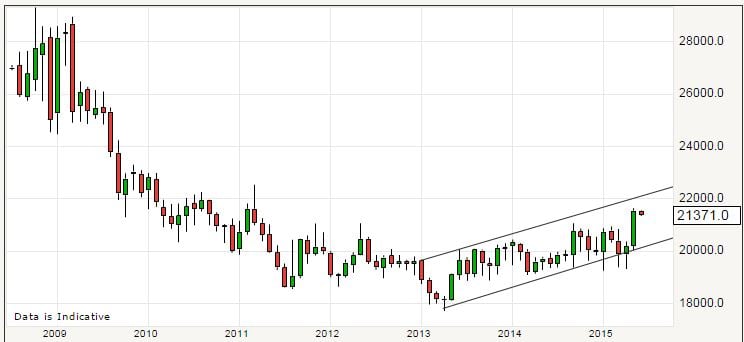Pound v New Zealand Dollar Rate Forecast to Rise to 2.20 in 2015 and 2.40 in 2016
The pound arrested its post-financial crisis period of decline against the New Zealand dollar in 2013 and forecasts suggest that the outlook from mid-2015 onwards favours a continuation of that recovery towards pre-crisis levels.
There is a growing sense that the economic outperformance of the New Zealand economy has peaked, with the loss of economic advantage the New Zealand dollar is left looking susceptible to losses.
One currency the NZ dollar is looking particularly vulnerable against is the British pound; we have seen the GBP-NZD pair recover from a low of 1.9298 and hit a 2015 best of 2.1522 on the back of recent NZ dollar weakness.
There is certainly a strengthening bias in the overall GBP exchange rate complex at the present time thanks to an improving economic situation in the UK, in short the performance gap between New Zealand and Britain is heading back towards pre-crisis levels.
This trend is confirmed by the gentle move higher in the exchange rate since 2013:
Be aware that any currency rate referenced here refers to the wholesale markets, when you make an international payment / transfer your bank will offer you a rate at their discretion. However, using an independent provider will get you closer to the market rates, in some instances this results in up to 5% more FX being delivered, find out how.
There is little evidence to suggest this trend higher in GBP/NZD should be questioned by those with an interest in this currency pair, particularly those with the luxury of having time on their hands as the move higher remains a gradual one.
The monthly graph is advocating for gains towards 2.2 in 2015 and 2.4 in 2016 provided current momentum remains valid. There are however risks that the move higher could accelerate, particularly if the Reserve Bank of New Zealand decides on cutting interest rates just as did Australia earlier in the year.
“We have seen positioning move increasingly against the NZD in recent weeks. Net shorts extended in the last four snapshots to reach levels not seen in three months. While it could be argued that we are close to extremes, we expect the ongoing pressure on the RBNZ to act alongside weakening domestic data to encourage further accumulation of shorts,” says Jeremy Stretch at CIBC.
Analysts at Deutsche Bank, in their most recent FX Blueprint publication, say they are expecting two RBNZ interest rate cuts in 2015. "We are turning more bearish on NZD expecting two cuts from the RBNZ over the summer months. Combined with the ongoing weakness in milk prices and light positioning, we like selling the trade-weighted kiwi," says the note.
NZ Economic Growth to be Weaker in 2015
At the start of June more signs have emerged that suggest the New Zealand economy is more likely to deliver downside surprises than upside surprises – a scenario that supports our thesis for a weaker currency.
Latest data on hand shows residential building approvals declined 1.7% in April following a 10.3% surge in March. The trend in new housing is now flattening after solid growth from 2011 onwards with growth in the year to April of just 2.8%.
That said, the number of approvals for apartments is at a 7 year high with the bulk located in Auckland. Apartment approvals are up 22.5% on a year earlier.
Business confidence in New Zealand fell in May according to the most recent survey undertaken on the matter by ANZ. The survey of 1500 companies has fallen from a high of 70.8 in early 2014 down to 15.7 in the May 2015 reading.
“While still positive, it suggests weaker economic growth in the year ahead,” suggests a note on the matter from St. George Bank in Sydney.
With regards to the immediate outlook, watch for trade data, due out on the 2nd of June.
“We have seen the NZ terms of trade deteriorate in the last two quarters. Should the trend towards the ratio of export prices to import prices remain pressured into Q1, as domestic commodity prices continue to deteriorate, we would maintain a negative NZD bias,” notes CIBC’s Stretch:
Although the NZD has proved to be the worst performing major over the last month (it has lost more than 5.5%), CIBC do not expect the trend to yet turn; hence we remain biased towards additional downside, looking towards 0.6950 against the US dollar.
With the GBP and USD trading in a similar fashion owing to the fact that both the Bank of England US Fed are looking to start raising interest rates we would expect strength in the USD-NZD to be matched by the GBP-NZD.












